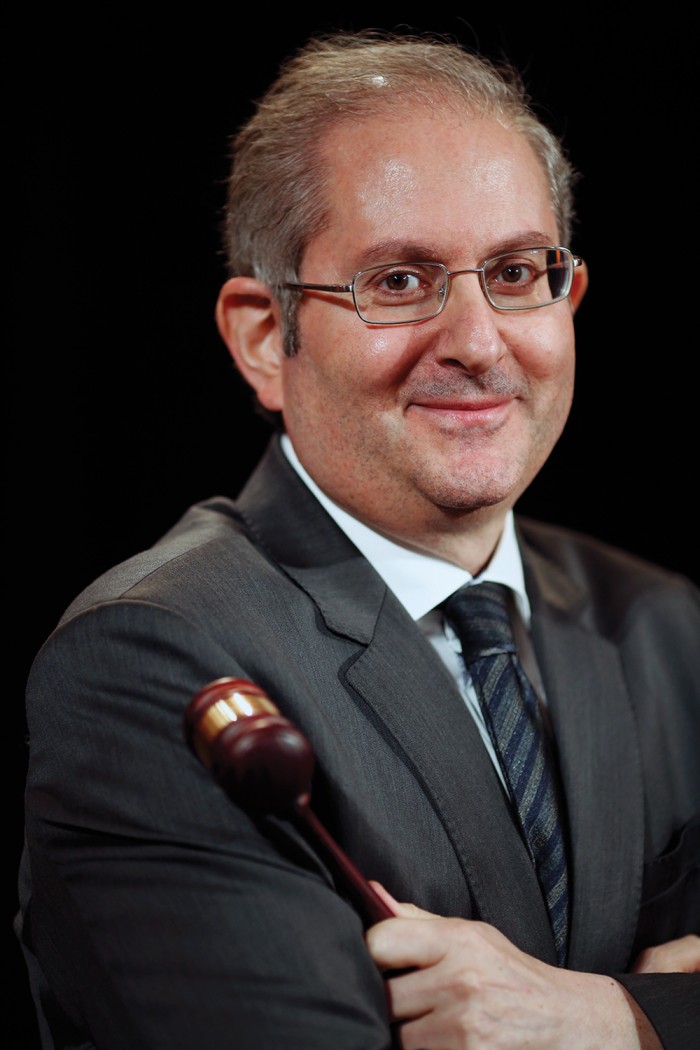Meet the President
“A global citizen … who has done much for his native country, Lebanon, and for MIT” is how President L. Rafael Reif describes the new president of the MIT Alumni Association, Nicolas E. Chammas. “What I admire about him is that he understands his role in the Arab world,” Reif says. “He also understands his role as a global citizen and as an MIT citizen who has been engaged with MIT for many years.”
Some 14 percent of alumni hail from outside the United States, but Chammas is the first Association president born outside the country and the second to live abroad. Martin Tang, SM ’72, lived in Hong Kong during his 2006-’07 presidency.
Chammas, an active volunteer for decades, has connected Lebanon and MIT in particular ways. His year as president, which begins July 1, will build on that community-focused ethos. An entrepreneur in Beirut, Chammas is head of a diverse family business, Elie D. Chammas & Company Holdings; vice chair of Cedrus Bank; and president of the Beirut Traders Association, the oldest employers’ organization in Lebanon, established in 1921. He has served as president of the MIT Club of Lebanon, as chair of the Board of Advisors of the MIT Enterprise Forum (MITEF) for the Pan Arab Region, and, for over a decade, as the Educational Council’s regional chair for the 21 Arab countries. Despite Lebanon’s turbulent political situation, he has fostered young entrepreneurs through a business plan competition—patterned on the legendary MIT $100K contest—and a new MITEF project, Grow My Business, which supports new enterprises beyond the startup phase.

“As MIT has been a game changer for me, my three decades of volunteerism were all about giving other people a similar opportunity, whether by helping to bring them to MIT in my capacity as regional chair of the Educational Council or by bringing (at least some of) MIT to them through club and Enterprise Forum activities,” Chammas says.
His MIT experience has been rewarding intellectually, professionally, and socially. “It has been like the gift that keeps giving,” says Chammas. “The two major takeaways were to never let yourself be caged in any paradigm or situation and to always think outside the box; and to set ambitious goals and constantly raise the bar for yourself and others.”
In addition to his MIT master’s degree in civil and environmental engineering, Chammas earned a bachelor’s degree at the American University in Beirut and an MBA from Harvard University. He worked as a strategy consultant in Paris before moving back to Lebanon in 1992. He lives in Beirut with his wife, Violette, and their three children.
The presidency will not be Chammas’s first stint on the Association Board of Directors. He has served on the board as a vice president from 2010 to 2013 and as the first international term member from 2007 to 2009.
Chammas has received two of the Association’s highest volunteer awards: in 2004, the Harold E. Lobdell 1917 Distinguished Service Award, which honors alumni relations service that is of special depth over a sustained period, and in 2008, the George B. Morgan 1920 Award, which recognizes sustained excellence supporting prospective students through Educational Council activity.
“My objective as president is to extend and amplify my predecessors’ trajectory, as I believe that the AA is on the right track,” he says. “My two priorities will be to reinforce strategic planning in coördination with the staff leadership and to enhance the engagement—whether in-person, virtual, or philanthropic—of graduate alumni.”
Keep Reading
Most Popular
Large language models can do jaw-dropping things. But nobody knows exactly why.
And that's a problem. Figuring it out is one of the biggest scientific puzzles of our time and a crucial step towards controlling more powerful future models.
The problem with plug-in hybrids? Their drivers.
Plug-in hybrids are often sold as a transition to EVs, but new data from Europe shows we’re still underestimating the emissions they produce.
Google DeepMind’s new generative model makes Super Mario–like games from scratch
Genie learns how to control games by watching hours and hours of video. It could help train next-gen robots too.
How scientists traced a mysterious covid case back to six toilets
When wastewater surveillance turns into a hunt for a single infected individual, the ethics get tricky.
Stay connected
Get the latest updates from
MIT Technology Review
Discover special offers, top stories, upcoming events, and more.